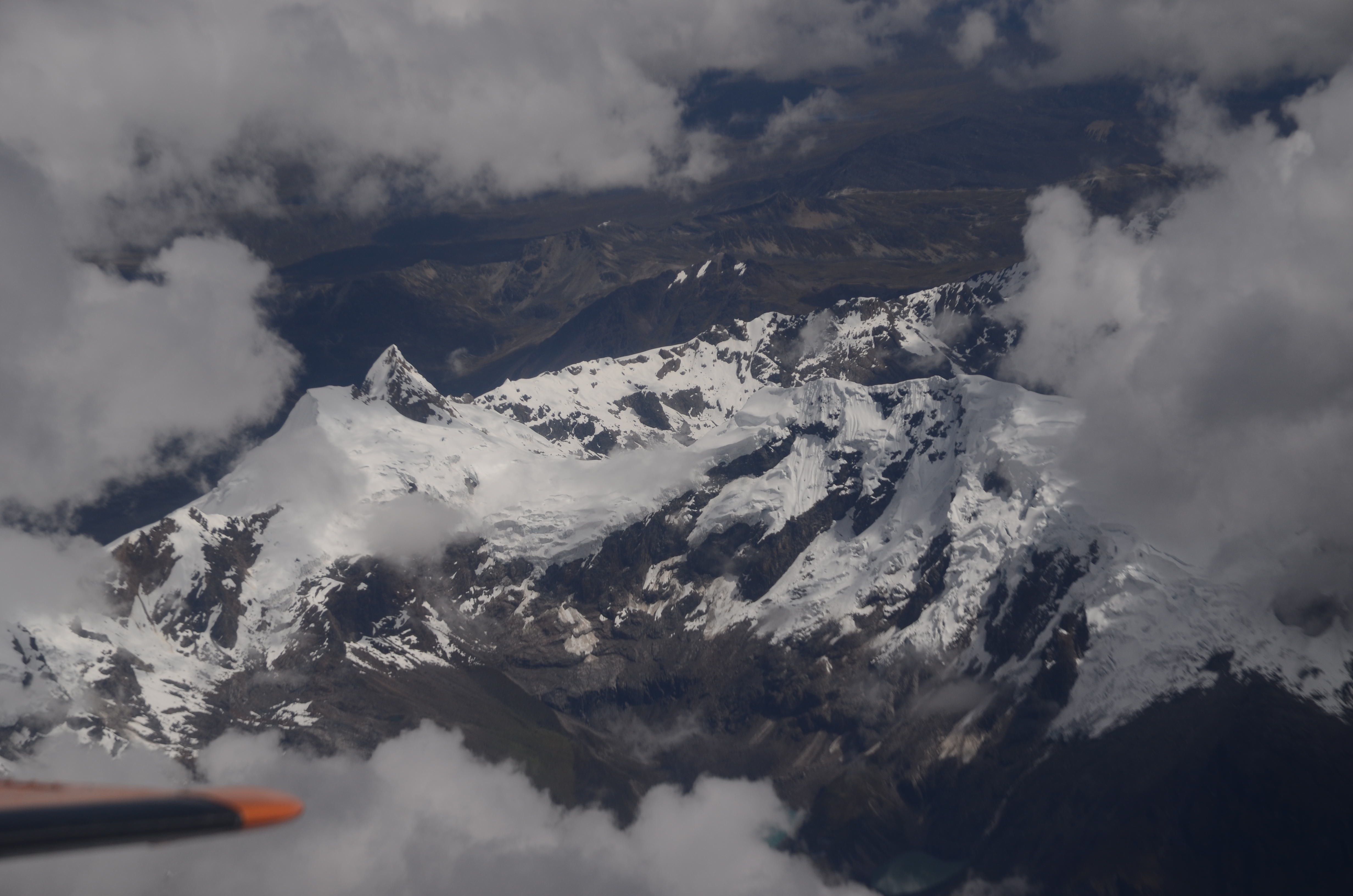Nearly all the world’s tropical glaciers cap mountains of the Andes. If you wonder why, look at where the highest peaks in the tropics are located and you’ll have your answer. About three quarters of these glaciers top Peruvian peaks providing the South American country with a natural resource of immense value and justifiable pride. But Peru’s glaciers, like most glaciers in the world, are melting at an alarming rate. The Peruvian Meteorology and Hydrology Service say that the country’s glaciers have lost about 20 percent of their volume since 1970. The American glaciologist Lonnie Thompson once told me that he thinks he’ll live to stand on the bedrock that today holds up the world’s largest tropical glacier—the Quelccaya Ice Cap near Cuzco Peru. He gave me this disheartening forecast in 2006 as we stood together atop Quelccaya, with several hundred feet of ice separating us from that rock foundation.
Today I visited another Peruvian glacier, topping a mountain known as Huaytapallana, and famous not for its size but the rate at which it has shrunk. A Peruvian government official reported earlier this year that studies of old photographs show that the surface area of the Huaytapallana glacier shrunk by 50 percent between 1986 and 2006. This visit was much briefer than my earlier trip to the Quelccaya, which involved a day-long jeep ride and two days trekking on foot, but grueling in its own way. The visit began in the city of Pisco on the runway of a military base, which also hosts a small commercial airport. I met my pilot, Cesar Pareja Lopez, at the side of his two-engine Cessna. Normally Lopez flies a special photographic camera for Horizon Air, a firm that produces topographic maps. I was anxious to examine the hatch in the plane’s belly where Horizon mounts its optical gear, because I relished getting clear pictures of the glacier through the same hole. I’ve taken many pictures from airplanes before but poor quality glass and plastic windows have always robbed the photos of their soul. However, Lopez hadn’t been informed that I wanted to shoot through the floor; he thought I just wanted a tour, seated and belted safely in a seat. He said that if he opened the hatch, the plane would be cold and that we’d have to wear oxygen masks. When these arguments didn’t dissuade, he said that I might fall out. Reluctantly, and with persuasion from my translator Dado, Mr. Lopez agreed to unscrew the metal lid that covered the hole when it is not in use. He gave me a form in triplicate absolving Horizon Air of responsibility if anything bad happened, and had me sign and ink a fingerprint on each page. I crawled into the Cessna’s hold and donned a rubber mask and noise-cancelling headset.
At first I was afraid of the opening into empty space about the size of a basketball hoop. But soon I had convinced myself that it was smaller and no more scary than the trap door of my childhood tree house, except that this perch was more than two miles above the ground. I started taking pictures sitting on my rear end, straddling the hole between my legs. But my back got sore and my lens was too far inside the plane. I lost my fear (or, some might say, my mind) quickly. By the time I reached Huaytapallana, near the city of Huancayo, I was lying on my tummy, sticking my head nearly into empty space.
Clouds enshrouded the glacier when we arrived, after a cruise of an hour. I had pulled on my winter fleece as the cabin cooled. Mr. Lopez made several passes over the summit, chasing rents in the clouds through which I might snap a clear shot. Each time he banked the plane and turned the aircraft on its side, he hooted loudly with excitement. My stomach grew queasy and I wondered if I’d get limp enough to slip out of the plane if I passed out. In the end, my best shot was not straight down through the opening after all, but through a window from the side, as Mr. Lopez paralleled Hyallatapalla’s spine. The mountain’s white mantle of ice impressed me. But I could also see many black patches of rock like holes in a tattered tablecloth. Had these spots been white last year? Five years ago? I don’t know. I hope to find out, though, when I meet one of Peru’s leading glaciologists later this month.
One more thing. If you find a black Nikon lens cap in the desert somewhere between Huaynaco and Pisco, Peru, it’s mine.
